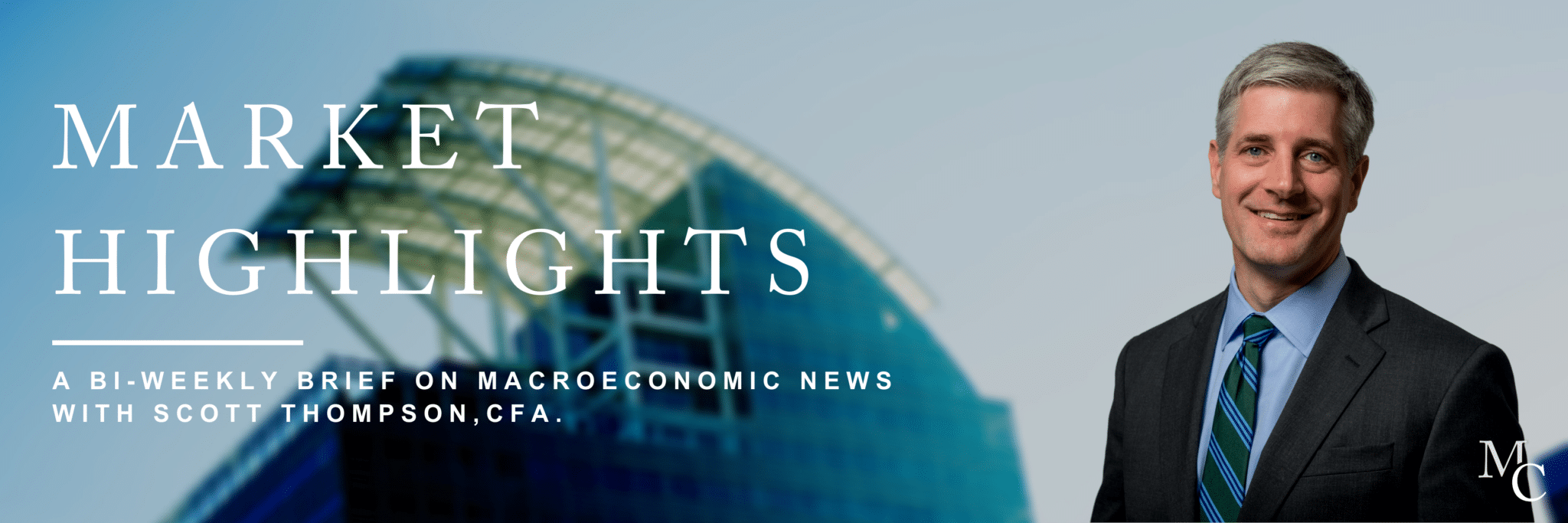
December 4, 2023
A “Goldilocks” mix of cooler inflation readings at the same time economic data continues to show solid, albeit moderating growth, has pushed bond yields lower and stocks higher. The economy appears to be slowing after a red hot third quarter as the cumulative toll from the Federal Reserve’s (“Fed”) 20+ month tightening campaign begins to weigh. A “soft landing” is now the consensus view, just as “recession” was coming into this year.
While many investors now seem to be looking forward to the Fed cutting rates as soon as next spring, this seems highly unlikely in the absence of a material deterioration in the economy and the labor market, which would not have positive implications for profits or the stock market if that were to occur. Consumer spending and business hiring have maintained a symbiotic relationship thus far. Consumers, sitting on excess savings and emboldened by a strong labor market, have continued to spend. Employers, meanwhile, continue to hire, encouraged by healthy consumer spending. This has allowed economic growth to remain resilient far longer than what would normally be expected in the face of higher rates. Recession will surely follow once that self-reinforcing dynamic breaks. But therein lies the quandary. Until we have visibility of whatever it is that breaks that dynamic, it is easy for people to proclaim “this time is different,” the Fed is succeeding in engineering a “soft landing”. However, history has shown that it is extremely difficult for the Fed to perfectly time its withdrawal of restraint, which is why its track record of engineering soft landings is so poor. Inevitably, as the economy becomes more fragile as a result of monetary tightening, an unexpected exogenous shock or financial crisis emerges that pushes the economy over the edge.
Cracks are beginning to emerge though, including growing signs that consumers – especially low/middle income – are increasingly stressed. Businesses, meanwhile, are starting to hunker down, reducing hiring and investment due to higher interest rates. The Sahm Rule may soon get triggered, which says that once the three-month moving average of the unemployment rate increases by 0.5% off a cyclical low within a 12-month period, the economy has entered recession, thereby joining a growing list of other historically-reliable recession signals that include an inverted yield curve, declining leading economic indicators (LEIs), and tightening bank credit.
Third-quarter earnings beat expectations, which was not surprising given the strength we saw in 3Q GDP. However, fourth-quarter EPS estimates have been trimmed as the economy slows, and 2024 earnings remain at risk in our view as growth and inflation moderate even further, leading to disappointing revenue and margins. Meanwhile, investor sentiment has turned much more bullish in the past month, and the so-called “fear gauge” – the CBOE Volatility Index (VIX) – at less than 13 reflects an astounding amount of investor complacency despite rising geopolitical risks.
We continue to see near-term market headwinds, including: (1) fully-valued stocks; (2) increasing consumer headwinds; (3) rising geopolitical tensions; (4) growing political uncertainty; (5) 2024 earnings estimates at risk; and (6) too much investor complacency.